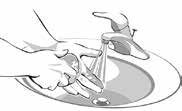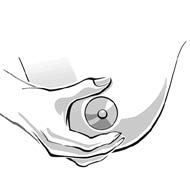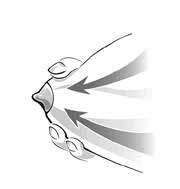There are two methods of expressing breast milk: hand expression and expression with a breast pump.
Tips to Express Breast Milk
- Be patient.
- Express when your breasts feel full or after breastfeeding your baby.
- You may only get a few drops when first learning to express. Expressing breast milk will get better and easier with practice.
- Switch breasts whenever the flow of breast milk slows down.
- Move your thumb and fingers in different positions around your breast to ensure that all breast milk ducts are emptied.
- Hand expression is the most effective way to remove colostrum, especially in the first 24 hours after delivery.
- Most breastfeeding individuals are able to express breast milk by hand; however you can also express breast milk using a breast pump.
Strategies That Can Help Increase the Amount of Breast Milk Expressed Include:
- Skin-to-skin contact with your baby before expressing.
- Massaging or compressing the breasts before and during expression.
- Applying warm compresses to the breast during expression.
- Expressing while being close to your baby, or looking at pictures or videos of your baby.
- Using relaxation techniques.
- Listening to music.
If you have any questions about expressing breastmilk, visit our breastfeeding clinics for additional support.
Express Breast Milk by Hand
Hand expression takes time to learn but will become easier and faster as you practice. It involves no cost, is always available and can be done anytime, anywhere.
Step 1
Wash your hands with soap and warm water.
Step 2
If your baby is healthy use a “clean” glass or hard plastic container (BPA free) to collect your expressed breast milk.
“Clean” means washed in hot soapy water, rinsed well with hot water and left to air dry on a clean surface away from where food is made.
Step 3
To help breast milk begin to drip, try any of the following:
- hold your baby skin-to-skin
- place a warm towel on your breast for a few minutes
- gently massage your breast towards the nipples
- gently roll your nipple between your thumb and finger
Step 4
Form a “C” with your fingers about 1–1.5 inches back from the outer edge of the dark area (areola).
Step 5
Push your thumb and 2 fingers straight back toward your chest.
Step 6
Gently compress your breast by bringing your thumb and fingers towards each other. Avoid sliding your fingers down towards the nipple. Then relax your fingers.
Repeat steps 4, 5 and 6 until the flow of breast milk slows down then switch to the other breast.
Video: Hand Expressing Milk (04:33). Reproduced by permission of Healthy Families BC
Express Breast Milk by Pump
There are different types of breast pumps, and each type works well for different needs.
- Manual hand pumps (for purchase).
- Battery operated, small pumps (for purchase).
- Electric personal use pumps (for purchase).
- Electric hospital pump (for rent).
Note: There are many sizes of breast shields. The shields that come with your breast pump may not fit you properly. A poor fit may cause nipple or breast damage. If you have any questions, visit our breastfeeding clinics for additional support.
Before Expressing
- Wash your hands with soap and water.
- To store breast milk, use clean, air-dried, glass or hard plastic containers.
- The breast shield must be centered over the nipple and the outer edge of the shield against the breast.
- For electric breast pumps, set the pump to the lowest setting before turning it on.
During Expressing
- Slowly increase the setting while pumping to a level that is comfortable for you.
- The suction from the breast pump should pull your nipple into the breast shield tunnel easily.
- If pumping one breast at a time, switch breasts whenever the flow of breast milk slows down.
- Change containers when it is ¾ full so that the breast milk does not back up into the pump.
- When finished, remove the breast shield slowly and carefully from your breast.
Cleaning
- Your breast pump should be cleaned according to the manufacturer’s instructions.
- Store parts in a clean, re-sealable plastic bag or plastic container with a fitted lid.
Donating Your Extra Breast Milk



